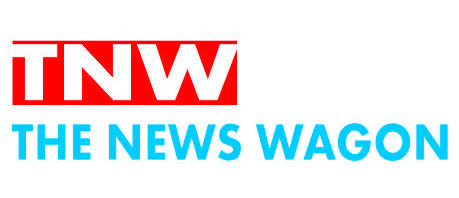New Delhi: When we think of glaucoma, it is usually associated with aging adults. However, a lesser-known but equally alarming variant affects children—Paediatric Glaucoma. Though rare, this disease can lead to severe and irreversible vision loss if not detected and treated early. Unfortunately, paediatric glaucoma remains underdiagnosed due to a lack of awareness, making it one of the silent yet significant threats to children’s vision. Dr. Vineet Sehgal, Senior Glaucoma Specialist, Sharp Sight Eye Hospitals, explained how paediatric glaucoma can be a threat to children’s vision.
Paediatric glaucoma occurs when fluid inside the eye (aqueous humor) does not drain properly, leading to increased intraocular pressure (IOP) and damage to the optic nerve. There are two main types of paediatric glaucoma: primary congenital glaucoma (PCG) and secondary glaucoma. PCG is present at birth or develops within the first few years of life due to an abnormal drainage system in the eye. It accounts for 50-70% of paediatric glaucoma cases and is more common in India than in Western countries. Secondary glaucoma, on the other hand, occurs due to trauma, inflammation, genetic disorders, or post-surgical complications.
One of the most alarming aspects of paediatric glaucoma is its distinct yet often overlooked symptoms. Parents may notice enlarged eyes (buphthalmos), cloudy corneas, excessive tearing (epiphora), and sensitivity to light (photophobia) in affected children. Infants with the condition may constantly rub their eyes or appear fussy due to discomfort. Since children cannot express vision problems, these early warning signs should not be ignored. Without timely intervention, the increased eye pressure can permanently damage the optic nerve, leading to partial or complete blindness.
Diagnosis: The challenges and advances
Diagnosing paediatric glaucoma can be challenging because infants and young children cannot articulate their discomfort or cooperate with standard eye examinations. Specialised paediatric ophthalmological assessments are required to confirm the condition. The most common diagnostic tools include tonometry, which measures intraocular pressure, gonioscopy, which assesses the drainage angles of the eye, and fundus examination, which evaluates optic nerve damage. Advanced imaging techniques like optical coherence tomography (OCT) provide high-resolution images of the optic nerve and retinal layers, helping doctors detect early signs of glaucoma. Since many young children are unable to stay still for these examinations, they are often performed under anesthesia (EUA) to ensure accuracy.
Treatment approaches: The role of surgery and medications
Unlike adult glaucoma, where medications are often the first line of treatment, paediatric glaucoma almost always requires surgical intervention to correct the drainage problem and reduce intraocular pressure. The most commonly performed surgeries include goniotomy and trabeculotomy, which aim to create a proper drainage pathway for the fluid inside the eye. These procedures have success rates of 80-90% when performed in the early stages of the disease. In more severe cases, trabeculectomy or glaucoma drainage implants may be required to provide an alternative route for fluid drainage.
Although surgery is the primary treatment, medications play a supportive role in managing intraocular pressure before or after surgery. Drugs such as beta-blockers (Timolol) and carbonic anhydrase inhibitors (Acetazolamide) help reduce fluid production, while prostaglandin analogs (Latanoprost) improve fluid outflow. However, long-term reliance on medications is not ideal due to potential side effects and limited efficacy in young children.
Long-term prognosis and follow-up care
The visual outcome of paediatric glaucoma depends on early diagnosis, timely intervention, and lifelong follow-up. Children diagnosed and treated in the early stages have a better chance of retaining good vision. However, some may require multiple surgeries, and vision rehabilitation programs, including the use of glasses, low vision aids, and therapy, can be crucial in ensuring that they develop normal visual function.
Regular follow-ups with an ophthalmologist are necessary to monitor intraocular pressure, assess optic nerve health, and detect any disease progression. Even after successful treatment, there is a risk of glaucoma recurrence, making lifelong care essential.
The need for greater awareness
Paediatric glaucoma remains a largely unrecognized condition, often leading to late diagnosis and irreversible blindness. Increased awareness among parents, paediatricians, and ophthalmologists is crucial for ensuring early detection. Governments and healthcare organisations must work towards better screening programs and improved access to specialized paediatric eye care in rural and underserved areas.
While medical advancements have improved outcomes for children with paediatric glaucoma, early intervention remains the key to preserving vision. Parents should be encouraged to seek immediate medical attention if they notice abnormal eye enlargement, excessive tearing, or light sensitivity in their children. By fostering awareness and ensuring timely diagnosis and treatment, we can prevent avoidable blindness and safeguard the vision of future generations.
Paediatric glaucoma occurs when fluid inside the eye (aqueous humor) does not drain properly, leading to increased intraocular pressure (IOP) and damage to the optic nerve. There are two main types of paediatric glaucoma: primary congenital glaucoma (PCG) and secondary glaucoma. Health News Health News: Latest News from Health Care, Mental Health, Weight Loss, Disease, Nutrition, Healthcare




